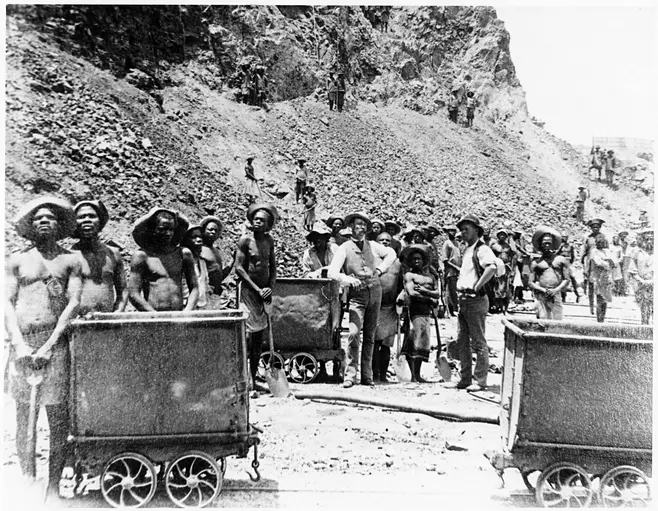Millä perusteella? Eivätkö ihmiset ylipäätään työskentele vapaaehtoisesti?
Enkä sanonut, että työskentelisivät pakosta, vaan että pakostakin kyseessä on britit, eivätkä eteläafrikkalaiset. Älä vääristele sanomisiani.
Britit olivat ainoat Etelä-Afrikan hallitsijat, jotka olivat "siirtomaaisäntiä". Valkoiset eteläafrikkalaiset tulivat alueelle kauan ennen bantuja ja zuluja.
Ja kyllä, kiistän, että eteläafrikkalaiset olisivat pitäneet bantuja orjina. Voit toki esittää faktat, jotka osoittavat minun olevan väärässä. Olen aina halukas oppimaan uutta.
Tämän sinä kirjoitit:
Etelä-Afrikassa ei ole ollut orjia. Toisin kuin tummaihoisessa keski-Afrikassa.
Miksi yrität vääntää asian toiseksi kuin se on, Etelä-Afrikassa oli orjuutta, joissa nimenomaan alistettiin alkuperäiskansoja. Se on aivan sama, oliko nämä kansat juuri sinun määrittelemällisi alueella "etelä-afrikassa" vai muualta siirtyneitä tai oliko orjuuttajat brittejä tai hollantilaisia, sekin aivan sama. Kafferikin on tässä ihan toisarvoinen, se vain tuli mieleeni, kun väitit ettei orjuutta ole ollut.
Early English
The 16th century explorer Leo Africanus described the
Cafri as pagan "negroes", and one of five principal population groups in Africa. According to him, they were of a very dark complexion, "for the most part exceeding blacke of colour". Leo Africanus identified the Cafri's geographical heartland as being located in remote southern Africa, an area which he designated as
Cafraria.[6]
Following Leo Africanus, the works of Richard Hakluyt designate this population as
Cafars and Gawars (Ilitterate), which is, infidels or disbelievers".[7][8]
Hakluyt refers to slaves ("slaves called Cafari") and certain inhabitants of Ethiopia ("and they use to go in small shippes, and trade with the Cafars") by two different but similar names. The word is also used in allusion to a portion of the coast of Africa ("
land of Cafraria").[9] On early European maps of the 16th and 17th centuries, southern Africa was likewise called by cartographers
Cafreria.
The word was used officially in this way, without derogatory connotations, during
the Dutch and British colonial periods until the early twentieth century. It appears in many historical accounts by anthropologists, missionaries and other observers, as well as in academic writings.
E:
History of slavery and early colonisation in South Africa
Between 1720 and 1790, slave numbers increased from 2 500 to 14 500. At the time of the final ending of slavery in 1838, the slave population stood at around 38 000. However, unlike the European population, which doubled in number with each generation through natural increase, the harsh living conditions of the Cape's slave population meant that their numbers could only be sustained through continued importation. Between 1652 and the ending of the slave trade in 1807, about 60 000 slaves were imported into the Colony.
Thus the Cape became not just a society in which some people were slaves, but a fully-fledged slave society.
EE:
Paikallisesta väestöstä ei riittänyt tarpeeksi orjia, joten tottakai muualta tuotiin lisää työvoimatarpeita tyydyttämään. Paikallinen todella alkuperäinen Khoi-kansa (bushmenit) puristettiin todella ahtaalle kolonisaation aikana.
The Khoikhoi were the first native people to come into contact with the Dutch settlers in the mid 17th century. As the Dutch took over land for farms, the Khoikhoi were dispossessed, exterminated, or enslaved and therefore their numbers dwindled.
Eikä tuo ajatusmalli ole paikallisilta "vanhanliiton-isänniltä" mihinkään kadonnut.

